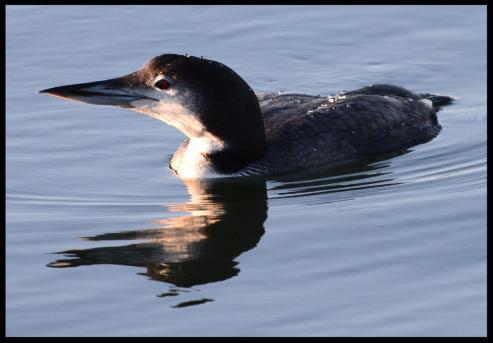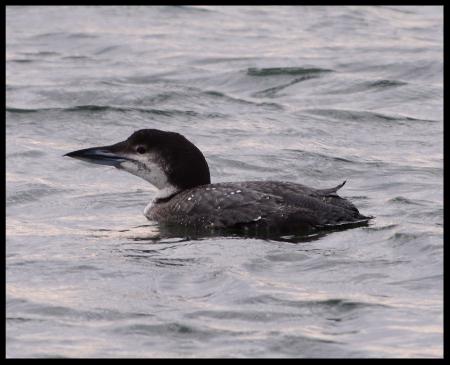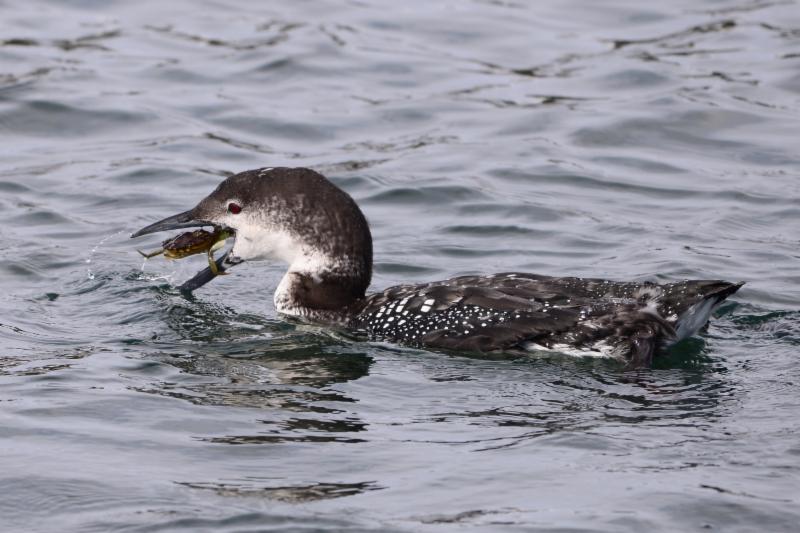| Upcoming Events |
Northeast Loon Study Working Group Meeting
March 16-17
March 21; 7 pm
Birds of the White Mountains
April 20; 7 pm
Summer Luncheon & Auction
June 4; 11 am - 2 pm
Bald Peak Colony Club
|
|
Winter Loons
|



Photos by Kittie Wilson
|
|
Did You Know?
|
For those of you that spend the winter in Florida, the loons you are seeing along the coast are ones that breed in the Midwest!
They are actually about 40% smaller than NH loons, probably because of their migration distance.
|
| Contact Us |
|
P.O. Box 604
Lee's Mill Road
Moultonborough, NH 03254
|
|
|
Are you enjoying this February thaw? I was happy to have a little break from shoveling, but I have to admit that I'm not ready for mud season yet! In the last e-newsletter, I reported that Winnipesaukee froze over in mid-January, but I spoke too soon. It looks like the Broads finally closed-in for good in mid-February. LPC Senior Biologist John Cooley has been keeping a close eye on a webcam stationed on Winni (near Welch Island) that shows ice coverage on the lake. While it looked to be completely frozen over, at last, as of February 13, John decided to see for himself. With his spotting scope in hand, John skied out to Welch Island and was relieved when he did not see any loons stuck on the ice! Maybe it's finally safe to put away the yellow rescue suit until next year? Hmmm, I don't want to jinx it!
|
|
|
Outfitted with his nordic skis and a spotting scope, LPC Senior Biologist John Cooley skied out to Welch Island to look for any stranded loons in mid-February.
|
|
|
|
The views are quite expansive on what appears to be a frozen Lake Winnipesaukee.
|
Please continue to be careful if you do go out on a lake this winter. The ice can be unpredictable (especially on a big lake like Winnipesaukee) and conditions may change quickly. Care to wager a guess as to when ice-out is going to be?! That seems like a silly question when most of NH got buried in close to 3 feet of snow this month!
For the 4th year in a row, an adult female loon has been observed in Biddeford Pool, Maine, by LPC volunteers John & Kittie Wilson. They brave all kinds of weather to check on the loons in that area and they were thrilled to see leg bands on one particular individual. From her unique color-band combination we know she was banded on Mooselookmeguntic Lake in Maine in 2012. Not much is known about loons on their wintering grounds, especially along the New England Coast, but these observations have shown that loons do exhibit site fidelity on the ocean too. Much like us, when you find a place you like a lot, you keep going back again and again!
|
|
|
You can just barely see the bands on this loon's right leg under the water. Volunteers John & Kittie Wilson were able to confirm that this is the female loon who was banded on Mooselookmeguntic Lake in Maine. Photo courtesy of Kittie Wilson.
|
|
|
|
LPC volunteer and loon photographer Kittie Wilson braves the cold weather to document wintering loons near Biddeford Pool, Maine. Photo courtesy of John Wilson.
|
In the last e-newsletter, I included a "Save the Date" for our Summer Luncheon and Auction. The date recently changed to June 4 (instead of June 11) once we confirmed that Jeff Fair, former Director of LPC, will be the guest speaker. We look forward to welcoming Jeff back to New Hampshire for this great event!
If you are starting to long for summer again, just remember the loons will be back in a few short months. Check out this neat account called "A Night in the Life" written by 2016 Northcountry field biologist Heather Meader.
Take care until next time,

|
|
|
Former Executive Director Jeff Fair is set to speak at LPC's Summer Luncheon on June 4!
Jeff Fair, LPC's Director from 1981 - 1991, will speak about his recent and current loon work and writing (bears), and sign his new book, In Wild Trust, at the Summer Luncheon and Auction on June 4th at Bald Peak Colony Club.
Jeff began his loon conservation work for LPC in 1978 on Lake Umbagog in northern NH. A wildlife biologist by formal training (BS Biology, ODU in 1974; MS Wildlife Ecology, UNH in 1977), Jeff has trapped and radio-collared grizzlies in the Yellowstone Ecosystem, worn the badge of a Utah game warden (one career arrest), and introduced snakes to tourists as a USFS naturalist in Oklahoma. Forty years after starting on Umbagog, he has continued to study loons in Alaska and the Canadian Arctic, Maine, and WY. Much of the time now he works with BioDiversity Research Institute based in Portland, Maine.
|
|
|
Jeff Fair holds a yellow-billed loon in Alaska. Photo courtesy of Ken Wright.
|
But his true study of life manifests itself in his essays and books, which ponder the connections between humans and the natural world--with a touch of humor and an uplifting message.
In Wild Trust tells the story of how a man with no wildlife training and never the term "Biologist" in his professional title became a world-renowned bear expert. At McNeil River State Game Sanctuary in southwest Alaska--the site of the world's largest congregation of brown bears--sanctuary manager Larry Aumiller spent 30 years developing a "trust" between humans and the world's largest terrestrial predator, the coastal brown bear (blood-kin to the grizzly bear), that has allowed thousands of visitors an up-close and intimate observation of the bears and their behaviors. Much like Jeff's writing about loons, this biography offers a parable about how we might learn to live at peace in our modern wilderness.
|
Life on the Ocean
Did you know that loons molt all of their flight feathers at the same time while they are on the ocean, leaving them flightless for a few weeks? You can see in the photo below taken on February 18 that these feathers are starting to grow back.
|
|
|
Photo courtesy of Kittie Wilson.
|
It's interesting how the timing of spring molt differs so much between individual loons. In the photo below, also taken on February 18, a wing flap reveals new flight feathers (primaries and secondaries) growing back in, but they are longer and more defined than the loon above.

We also see differences in the timing of molt between individuals in the fall too. Gender does not seem to be a factor, and we do not know what drives individual differences in this timing.
These next photos are the same loons as photographed above, respectively, and again illustrate the differences in molt between two individuals taken on the same date.
|
|
|
Looking at this female loon floating on top of the water, you would not know that her flight feathers are growing back in. Photo courtesy of Kittie Wilson.
|
This loon is much farther along in its molt and I suspect in a few more weeks it will be back to the striking black and white plumage that we all recognize. If only we knew where it came from!

In many photos taken along the coast, you'll notice that loons are often caught eating crabs. It may be harder for them to spot fish while on the ocean because the wave action makes the water less clear. I have not personally watched a loon eat a crab, but I understand it can be quite comical. It seems they all have a different way of eating them (I can appreciate that as I grew up in Maryland and ate a lot of steamed crabs)!
|
|
|
This photo was taken last winter in Nova Scotia, Canada. Photo courtesy of Reigh Higgins.
|
|
|
| |
|
The Loon Preservation Committee is dedicated to restoring and maintaining a healthy population of loons throughout New Hampshire; monitoring the health and productivity of loon populations as sentinels of environmental quality; and promoting a greater understanding of loons and the natural world.
Sincerely,
Susie Burbidge
Outreach/Volunteer Coordinator
Loon Preservation Committee
|
|
|